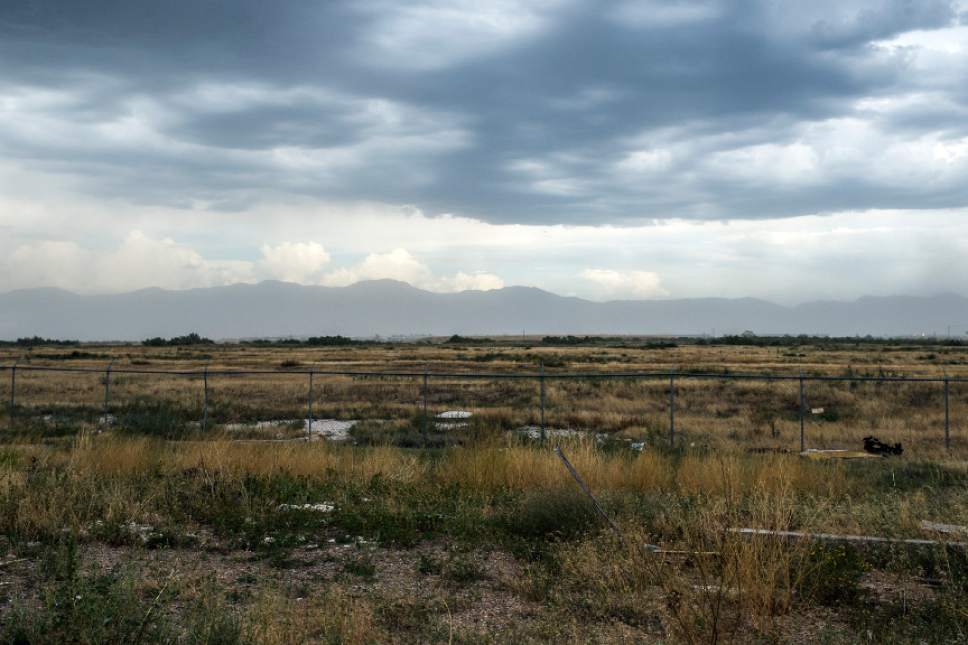This is an archived article that was published on sltrib.com in 2016, and information in the article may be outdated. It is provided only for personal research purposes and may not be reprinted.
With the Utah State Prison coming to Salt Lake City, officials are moving quickly in hopes of boosting economic gains at both ends of the transfer.
Exploiting land vacated by the aging Draper prison over the next four years and developing the new locale west of Salt Lake City International Airport offer the potential for generating millions of new dollars, leaders say.
For the Point of the Mountain, a group of lawmakers, mayors and business leaders has begun a detailed planning process to create the optimal mix of employers, commercial buildings, dense residential development and green space to occupy state-owned acreage and adjoining privately held parcels after the prison leaves.
That multiyear study, assigned to the regional planning agency Envision Utah, is getting underway amid record-breaking growth along Interstate 15 north and south of the prison site, part of a technology boom centered along Utah's Silicon Slopes.
"The time is ripe," Ari Bruening, Envision Utah's chief operating officer, said Wednesday. "In fact, the time was probably ripe several years ago."
The planning group has unveiled a new website — pointofthemountainfuture.org — to spearhead its land-use, utility and development study, which is expected to be complete in 2018.
Because the land's future involves two counties and a host of cities as well as several school and water districts, universities and dozens of private landowners, Bruening said, "this is definitely a very complex puzzle to put together."
State officials make clear that gathering public input, conducting analysis and modeling different development scenarios for Point of the Mountain need to move quickly in light of existing development pressures. Lawmakers say they want an early glimpse of Envision Utah's plans as the Legislature prepares to convene in January.
Utah House Majority Leader Brad Wilson, R-Kaysville and a co-chairman of the state panel studying Point of the Mountain development, has repeatedly called it "a once-in-a-lifetime opportunity."
Some 25 miles to the north, a quieter but no less crucial effort is unfolding for the newly purchased future site of the prison, located north of Interstate 80 in the far west corner of what Salt Lake City calls its Northwest Quadrant.
Having lost its fight to resist hosting the $550 million prison, a top aide to Mayor Jackie Biskupski said, the city is now "very anxious to make sure we maximize the benefit."
"The economic opportunity is unparalleled," said Lynn Pace, the mayor's senior adviser on intergovernmental affairs.
Planning for that development could be easier than for the Point of the Mountain, given the involvement of only one city, county and school district, Pace and others noted.
At the mayor's urging, the City Council voted in July to turn relevant portions of the Northwest Quadrant into a special development district under the city's Redevelopment Agency, allowing use of low-interest loans, special tax incentives and other tools to promote business growth there.
And with the state's $12.4 million purchase earlier this month of 323 acres where the prison will actually go, city efforts to take advantage are accelerating.
With nearly 3,000 acres of undeveloped land in play, Councilman Charlie Luke called it "the first blank-slate opportunity we've had as a city for 100 years."
"We will be creating something we've never done before," he said.
Salt Lake City has hired a consultant and is working on a strategic plan for marketing the larger prison site to prospective developers and businesses.
"We're on a very fast timeline on this," city Economic Development Director Laura Fritts recently told the council.
State officials deliberately located the prison "as far away as they can" from developed portions of the city, said Pace. While minimizing prison impacts on residents, the westward siting also will boost the reach of new access roads and utility corridors constructed to serve the prison.
New state roads and high-capacity water and sewer pipes serving the prison and surrounding parcels could be functional within two years.
"They're not just building a prison," Pace said, "They're also doing it in a way that maximizes the economic opportunity."
Twitter: @TonySemerad







